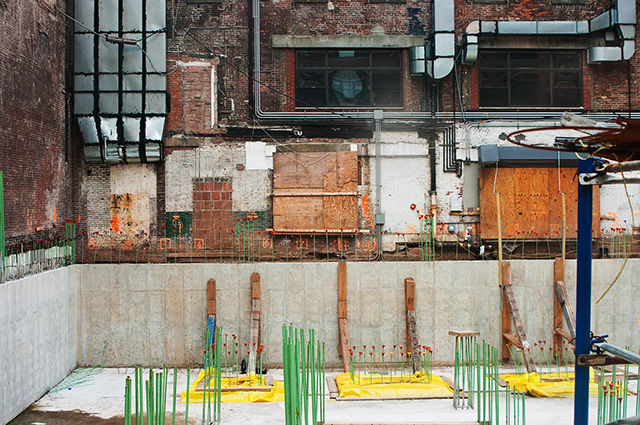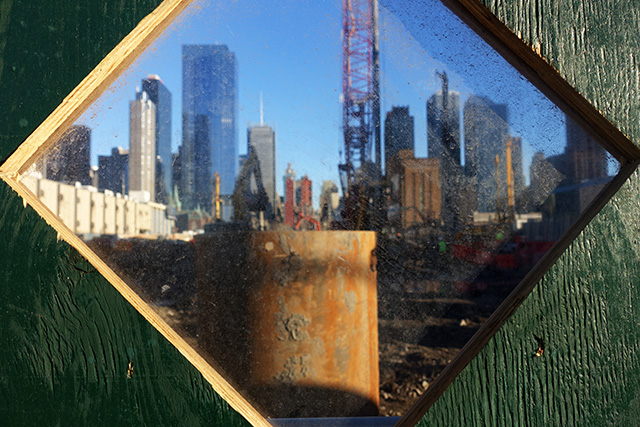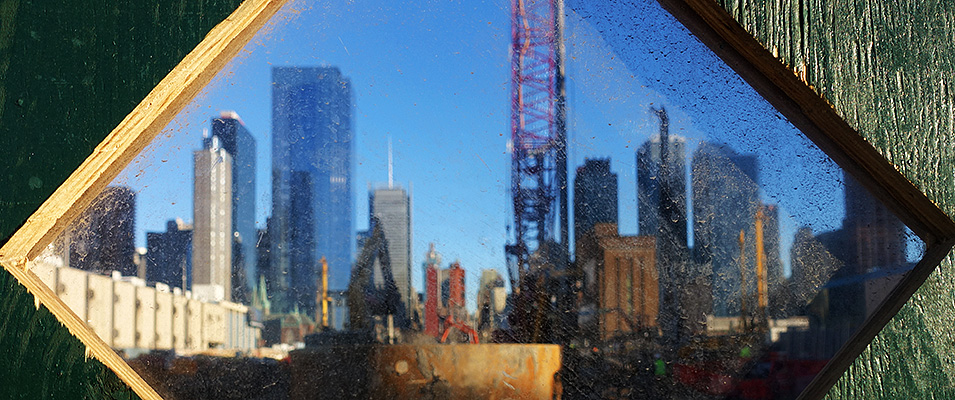By Stephanie Luciano
Carter River begins his morning at work with group huddles to explain the tasks of the day on the job site. Every huddle consists of a review of safety rules and a job hazard analysis to help eliminate, or minimize, hazards. “We go over all the possibilities of any kind of accidents that can happen related to that specific task and how it could be handled or how it should be approached,” said River, clad in a pale-white hard hat and safety gloves. “Everyone’s objective is to make it back home at the end of the work day.”
River represents TDX Construction, a construction firm that specializes in the management of projects for public and private institutions. He says it is a firm that’s earned a reputation as high quality, client centered and that completes projects on time, within budget. “They work a lot with New York City and around the country,” said River, who was working on the façade of Concert Hall at CUNY, Lehman College.

Construction has the highest injury rates out of all professions, according to the Bureau of Labor Statistics (BLS). The work is done in bad weather conditions, at extreme heights, and around dangerous chemicals. Most recent data shows 5,147 fatal work injuries recorded in New York State in 2017.
Data from the New York City Department of Buildings (NYCDOB) show 181 injuries and three fatal incidents as of April 2019. In 2018, there were a total of 229 injuries and 12 fatalities. Although a worker falling is the most common constructed-related accident in New York City, accidents outcomes range from fatal to more minor injuries such as, stepping on a nail causing a foot puncture.

(Henry Hemming)
The sixth annual Construction Safety Week ran May 6th to May 10th in 2019. It was initiated to reduce site accidents. The Construction Safety Initiative, CSI, includes 12 major contractors who come together for a two-day meeting to discuss safety in a workplace.
TDX stresses safety day in and day out said River. There are constant reminders and incentives for having a whole month of no incidents. “Sometimes it can be nagging for a lot of people,” he added, but necessary considering the liabilities that are involved for construction sites. Construction insurance protects businesses like TDX against financial liabilities that can result from unexpected accidents. The kind of exposure, or degree of risk, on the job site determines on the cost of insurance.
The NYCDOB holds an annual Build Safe | Live Safe conference, where industry experts discuss trends and highlights. The May 10 event included seminars on elevator door monitoring, tenant protection in buildings occupied during construction, and façade failures in high rise existing buildings.
Checklist and reminders are provided to avoid hazards that may cause injuries, illnesses, and fatalities. Before the start of a day, a worker must have on protective gear, hard-hat, gloves, long pants and non-slip boots. Each worker should inspect their equipment before using it and ensure staff is trained in their given task. Emergency and rescue procedures are consistently reviewed for workers so that they understand their role during an emergency situation.
The Occupational Safety and Health Administration (OSHA) made it a requirement in 2018 for construction workers to complete at least 10 hours of trainings. As of May 1, 2019, all workers must have a Site Safety Training card, obtained by completing a 30-hour OSHA course.
“Having proper documentation before setting foot onto the worksite is important,” said River. “Safety. That’s the priority.”



